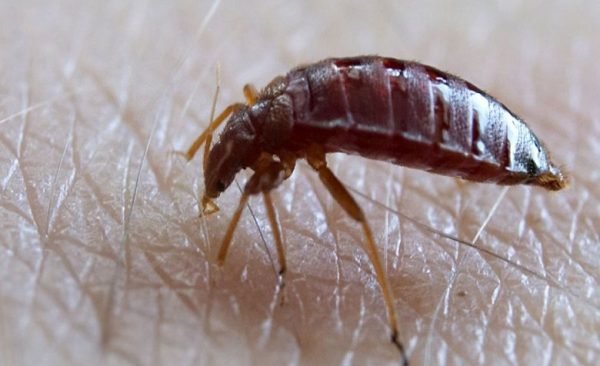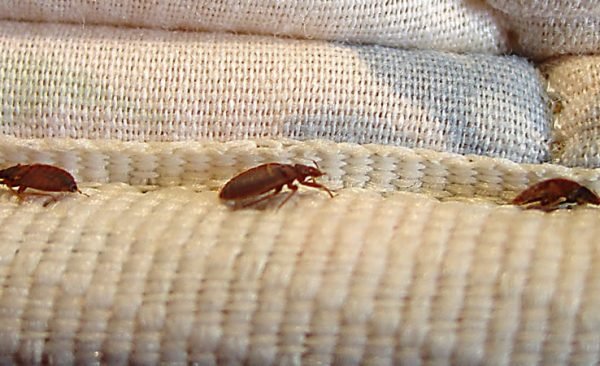Obtain Enlightened Regarding the Kinds of Insect Control Techniques and Their Benefits for House Owners
Comprehending the different parasite control approaches readily available to property owners is essential for reliable insect management. House owners who are educated can make tactical choices that not only address bug problems yet additionally improve the general high quality of their living environment.
Chemical Parasite Control Approaches
Chemical insect control approaches are an important element of incorporated pest management methods for home owners seeking effective solutions to pest invasions. These techniques entail the application of chemical materials created to get rid of or discourage parasites that endanger personal home, wellness, and comfort. Usual chemicals made use of include pesticides, herbicides, rodenticides, and fungicides, each tailored to target specific bugs.
The main advantage of chemical insect control is its quick efficiency; several solutions offer prompt outcomes, minimizing pest populations considerably quickly. Furthermore, advancements in chemical formulations have actually caused products that are a lot more eco-friendly and have reduced toxicity levels for non-target microorganisms when applied appropriately.

Biological Insect Control Methods
Natural pest control methods have actually acquired prominence as property owners seek safer and extra sustainable alternatives to typical chemical methods. Biological insect control strategies use natural killers, parasites, or microorganisms to manage bug populations properly. This method is not only eco pleasant however additionally reduces the risk of injury to non-target varieties, consisting of valuable insects and wild animals.
Among one of the most typical organic control methods entails introducing natural predators into the setting. As an example, ladybugs can be made use of to regulate aphid populations, while nematodes target soil-dwelling insects like grubs. In addition, parasitoids-- microorganisms that survive or within a host-- can be employed to control certain parasite species by laying eggs inside them, inevitably leading to their death.
One more technique is the usage of biopesticides, which are originated from natural products such as minerals, plants, or bacteria (bed bug exterminator). These products can properly target insects while presenting marginal danger to humans and pet dogs. Generally, biological pest control methods offer house owners with an efficient ways of insect management that aligns with ecological concepts, promoting a healthier living environment while minimizing dependence on artificial chemicals
Mechanical Parasite Control Approaches
Mechanical parasite control methods include a range of approaches that physically stop or get rid of parasites without making use of chemicals. These methods are particularly advantageous for house owners seeking eco friendly options while ensuring the safety and security of their space.
One usual technique is using barriers, such as internet, catches, and displays, which prevent pests from getting in homes or particular locations. For example, installing window screens can efficiently keep bugs out, while using physical obstacles around gardens can discourage larger insects like rabbits or deer. In addition, mechanical catches designed for rats can capture and eliminate these parasites without the requirement for poisonous substances.
An additional efficient technique involves making use of vacuums and mops to get rid of insects directly from surfaces. Regular cleansing and maintenance can considerably minimize parasite populations by getting rid of food sources and concealing areas. find more information In addition, employing devices like ultrasonic parasite repellents can deter various bugs through sound waves that are unpleasant to them yet faint to humans.
Cultural Bug Control Practices
Social insect control techniques concentrate on changing the atmosphere and management strategies to create conditions that are less for pest invasions. These practices are basic in preserving a well balanced environment and decreasing the reliance on chemical interventions. By altering farming techniques, home owners can successfully hinder insects while advertising plant health.
One typical strategy includes plant rotation, which disrupts the life process of parasites by transforming the sorts of plants expanded in a details More Help area (bed bug exterminator). This not only reduces pest populations yet also boosts soil health and wellness. In addition, intercropping-- planting diverse plants in closeness-- can confuse insects and lower their capacity to find their preferred host plants
Water administration is an additional important facet of cultural techniques. Proper irrigation techniques can stop standing water, which functions as a breeding ground for mosquitoes and other pests. In addition, keeping sanitation in and around the home, such as routinely removing particles and food waste, can dramatically lower parasite attraction.
Integrating these cultural techniques into a thorough bug monitoring strategy allows property owners to produce an environment that normally discourages insects, therefore enhancing the performance of other control approaches while advertising sustainable gardening and landscaping.

Integrated Pest Administration Approaches
Integrated Bug Administration (IPM) represents an alternative method that combines numerous strategies to efficiently manage insect populations while reducing environmental influence. This methodology integrates biological, cultural, physical, and chemical practices to accomplish lasting parasite control. By evaluating pest populaces and their natural adversaries, IPM emphasizes surveillance and determining parasites before implementing control steps.
One of the core concepts of IPM is making use of thresholds, which develop the level of insect activity that requires treatment. This ensures that treatments are used just when necessary, decreasing the reliance on chemical pesticides. Organic control approaches, such as introducing natural predators or parasites, operate in combination with social practices like crop rotation and environment control to interfere with pest life process.
Additionally, IPM motivates using least-toxic chemical choices when intervention is necessary, focusing Related Site on products that present minimal danger to non-target organisms and the environment. For house owners, adopting IPM comes close to not only improves the efficacy of bug monitoring but likewise promotes a much healthier living setting, cultivating biodiversity and minimizing chemical exposure. Ultimately, IPM encourages home owners to make educated choices that stabilize pest control with environmental responsibility.
Final Thought
In final thought, understanding the various bug control approaches encourages home owners to make educated choices pertaining to pest management. Each strategy-- chemical, organic, mechanical, cultural, and incorporated bug administration-- offers distinctive benefits that provide to various requirements and preferences.
Comprehending the numerous bug control approaches offered to property owners is important for effective pest management.Chemical pest control approaches are a vital component of integrated insect management approaches for homeowners looking for effective services to pest problems. Overall, organic bug control methods provide house owners with an effective methods of pest management that lines up with ecological principles, promoting a much healthier living environment while minimizing reliance on artificial chemicals.
Cultural bug control techniques focus on changing the setting and management strategies to create problems that are much less conducive to pest problems.In conclusion, understanding the numerous pest control approaches encourages home owners to make enlightened choices regarding pest monitoring.